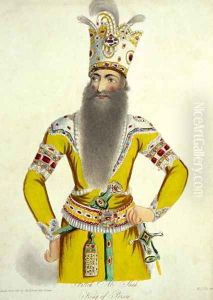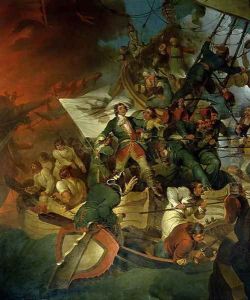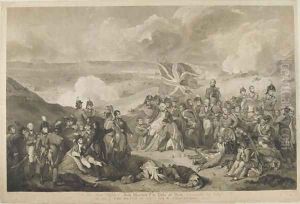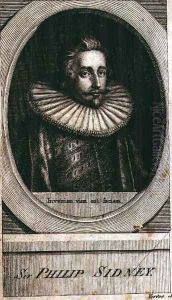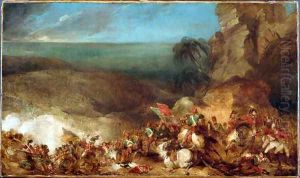Sir Robert Kerr Porter Paintings
Sir Robert Ker Porter was a notable figure in the early 19th century, known for his work as an artist, writer, diplomat, and traveler. Born on June 24, 1777, in Durham, England, he was the younger brother of the writers Jane Porter and Anna Maria Porter. His family was involved in the arts and literature, which had a significant influence on his upbringing and career choices.
Porter demonstrated artistic talent from a young age and received his education at the Royal Academy in London. His penchant for dramatic, large-scale historical paintings gained him recognition early in his career. One of his most famous works, the immense painting 'The Storming of Seringapatam' (1800), measuring nearly 120 feet in length, depicted the final victory of the British over Tipu Sultan in India. This monumental work earned him considerable fame and was exhibited in London to great public acclaim.
Aside from his painting, Porter was a prolific writer and published a number of books based on his travels and experiences. His written work included accounts of his journeys through Russia and the Caucasus, as well as historical novels and essays on art.
Porter's talents and interests extended beyond art and literature. He served as a diplomat for the British government, with posts in Venezuela and other parts of South America, where he was knighted in 1831. Later, he served in Russia, where he was appointed as His Majesty's Consul in Venezuela and the historical painter to Tsar Alexander I. He was also involved in various military campaigns and was present at the Battle of Waterloo in 1815.
Sir Robert Ker Porter died on May 4, 1842, in St. Petersburg, Russia. His life and work had spanned the realms of art, literature, and diplomacy, leaving a legacy that reflected the broad scope of his talents and interests. His contributions to the arts and his vivid accounts of his travels provided valuable insights into the historical and cultural contexts of the times in which he lived.
